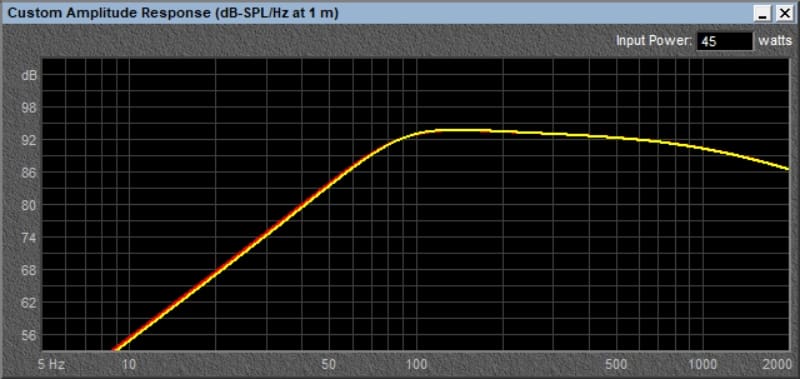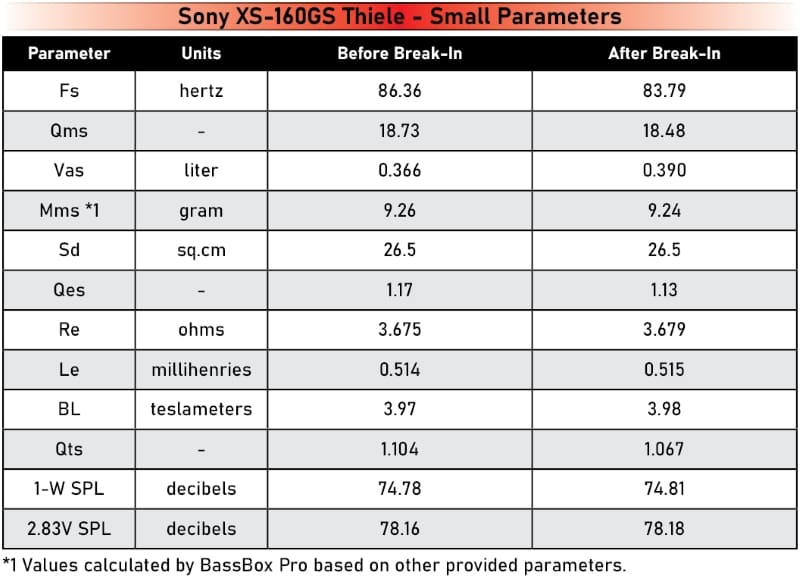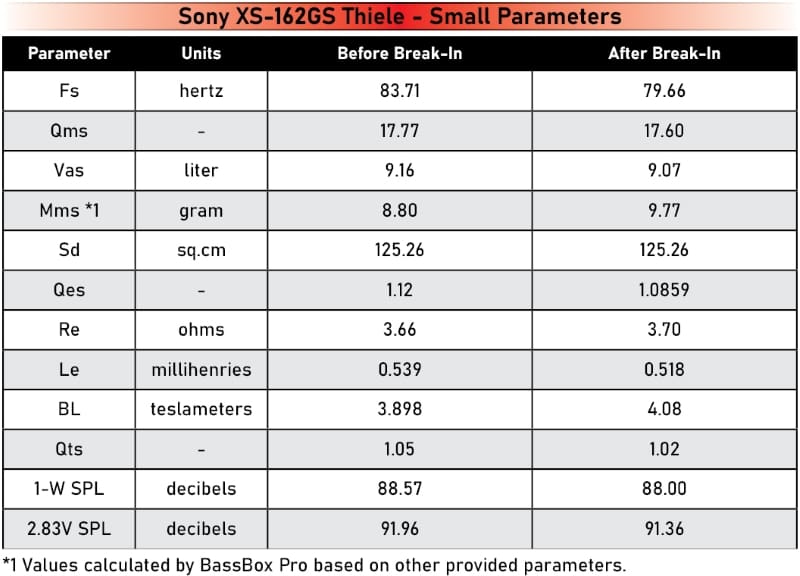There’s no doubt that auditioning high-end speakers, amplifiers and source units is one of the best parts of my job. That said, most of the business conducted by mobile electronics retailers is done at the opposite end of the price spectrum. Affordable audio upgrades or replacement products are the bread and butter that keeps the doors open and the lights on. The Sony car audio team is well aware of this fact, and their new XS-162GS and XS-160GS speakers are designed to offer great performance at a very reasonable price. Let’s check them out!
Speaker Design Basics
Let’s start by explaining what we have here. The XS-162GS is a set of 6.5-inch class component speakers. They include a pair of woofers, a pair of tweeters and inline passive crossovers for the tweeters. The XS-160GS speakers are a 6.5-inch class coaxial set with a pair of two-way speakers. Both sets include mounting hardware.
The two sets are very similar in terms of specifications. Both share a 45-watt RMS continuous power handling rating that is compliant with the CTA-2031-A standard. Maximum power is rated at 250 watts peak. Efficiency is 89 dB SPL, measured with 1 watt of power to a single driver, measured at 1 meter. Finally, the specified frequency response is 50 hertz to 24 kHz.
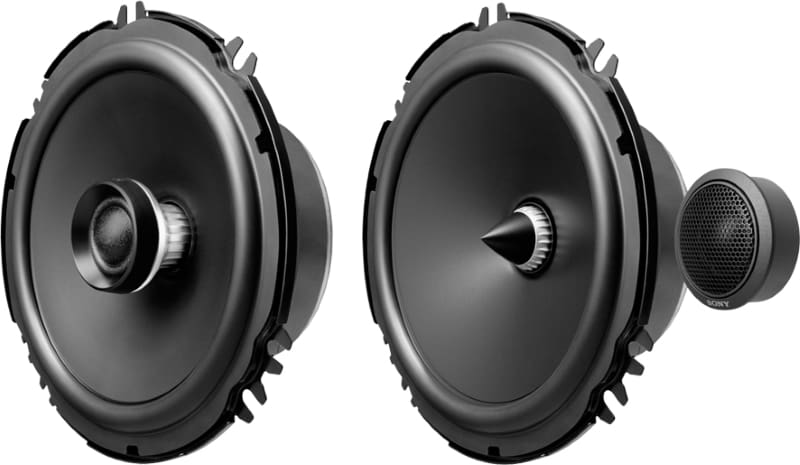
Woofer Design and Features
The woofers in the XS-162GS set and the speakers in the XS-160GS set use the same stamped steel basket. The shape includes embossing on the four spokes to add strength and rigidity to the design. The perimeter has seven mounting tabs, making the speaker compatible with three- and four-hole mounting solutions. A ceramic magnet handles the fixed magnetic field.
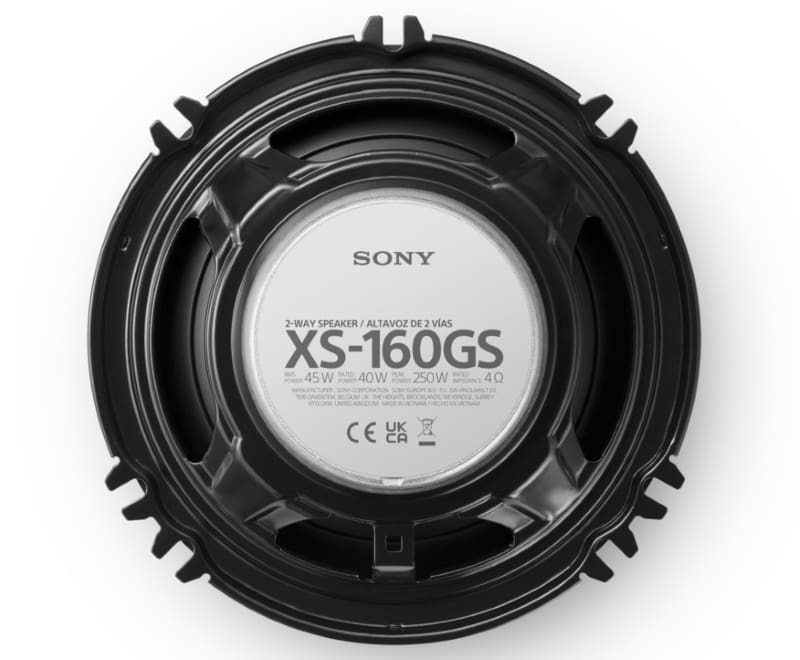
The dimensions of OE-upgrade speakers are crucially important. You don’t want a speaker that’s too large or too deep. The new 6.5-inch GS speakers have a mounting depth of 1 7/8 inches. The cutout, or mounting diameter, is right at 5 inches. The tweeter on the XS-160GS stands 21/32 inch above the mounting surface.
The woofer cones are injection-molded polypropylene with a UV inhibitor. The foam rubber surround features an air-filled matrix to provide optimized damping characteristics. Of course, synthetic rubber will dramatically outlast a closed-cell foam surround. Electrical connections are made via standard 0.110- and 0.205-inch terminals on a non-conductive tab connected to the basket. Both woofers use a progressive height spider, as on the premium Sony Mobile ES series speakers.
Another design element shared with the Mobile ES speakers is the phase plug, which deploys Sony’s Dynamic Air Diffuser design. The fins on the phase plug on the XS-162GS and the tweeter post of the XS-160GS help transfer heat away from the voice coil assembly. This design improves power handling, so you can play the system louder for longer.
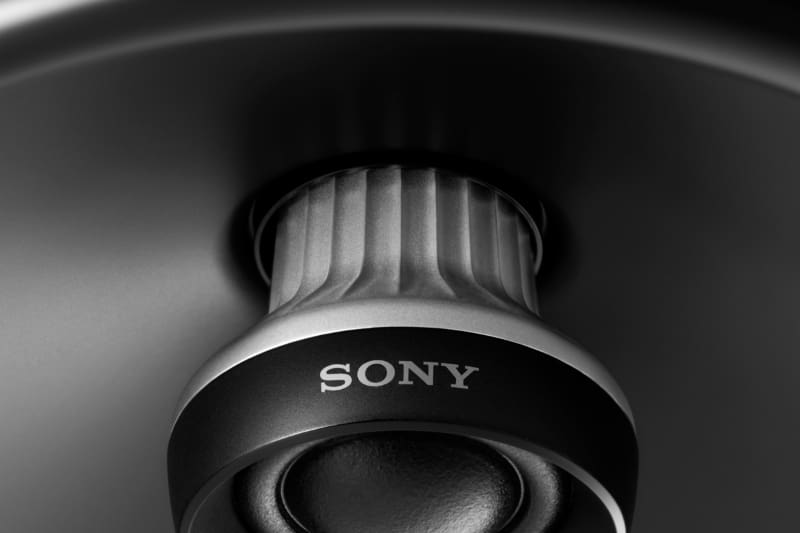
Silk Soft-Dome Tweeters
The Sony XS-162GS component set includes a pair of 1.79-inch/20-mm tweeters in a compact housing with a mesh grille. The tweeters include pigtails for electrical connections. Installation options include surface-mount brackets with optional angled inserts. A set of flush-mount brackets is also included. The passive crossover network included with the kit is dedicated to the tweeter. This is convenient for your installer, where you might have the woofer in the door and the tweeter in the dash or A-pillar. The tweeter itself is a silk dome design. They use a compact neodymium magnet in a small package for good efficiency.
The tweeters integrated into the XS-160GS coaxial speakers use the same 20-mm silk dome design but are mounted to a pedestal that replaces the phase plug in the component speakers. You’ll notice the tweeters are recessed into a somewhat deep cavity. This is a small waveguide that helps improve output around the crossover point. The design also protects the tweeters from damage when installed behind a factory speaker grille in your vehicle.
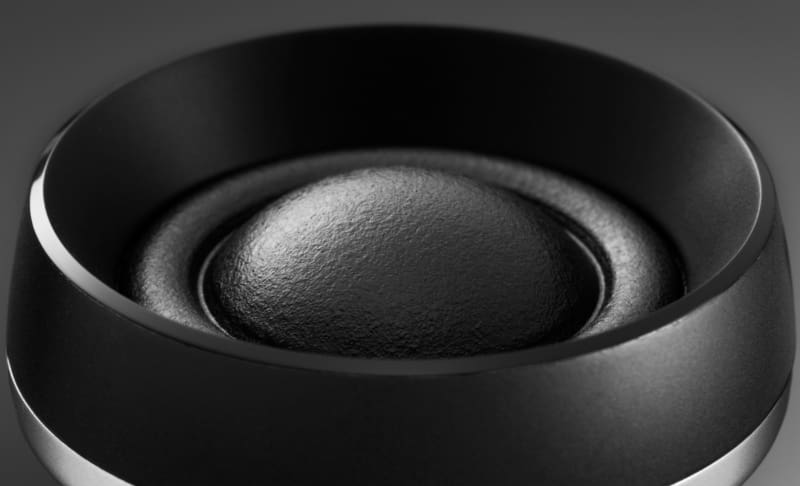
Environmentally Friendlier Packaging
Sony has changed the packaging for their GS-Series speakers and subwoofers. Rather than glossy, full-color artwork, they use raw cardboard with monochromatic black printing. The change reduces ink usage by 90%. In addition, the internal packaging uses pressed paper cushions, like you get from your local fast-food establishment or coffee shop. This helps minimize the use of hard-to-recycle foam. The packaging is also physically smaller than previous models to reduce shipping expenses. We have to applaud Sony’s efforts to reduce their environmental impact.
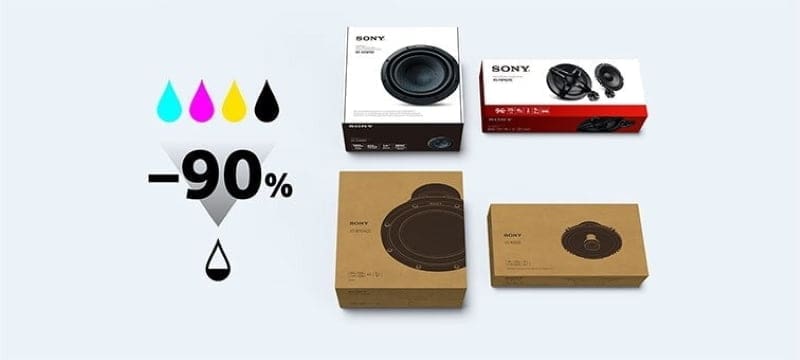
Sony XS-160GS Coaxial Speaker Measurements
Let’s start our technical analysis with the XS-160GS coaxial speakers. We measured the Thiele/Small parameters of the drivers fresh out of the carton. We fed a low-frequency signal to the speakers for eight hours, let them cool, and then repeated the parameter measurement. This process aims to identify whether the speaker requires a break-in process. The resonant frequency (Fs) dropped from 86.3 to 83.8 hertz. The equivalent compliance (Vas) increased from 0.366 to 0.39, and the Total Q (Qts) decreased from 1.104 to 1.067, neither of which is significant. The graph below shows the difference in the response based on a large sealed enclosure that would simulate usage in a door or rear parcel shelf. As evident in the parameter changes, the response changes very little. You should be ready to go with these speakers as soon as they’re installed.
While I had the driver set up on the bench, I took an impedance sweep after the break-in process. This will show the fundamental resonant frequency and any cone resonances. The XS-160GS was nice and smooth, with only a small ripple up around 1.5 kHz. The tweeter and the passive crossover components are not shown in this measurement.
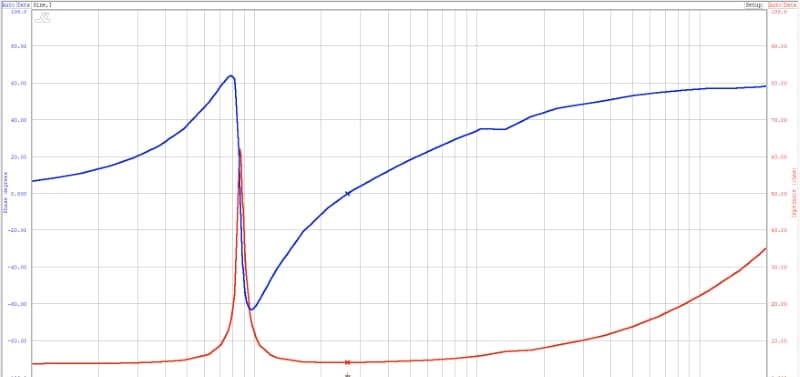
The last measurement was to make an impedance sweep on the tweeter. I bypassed the crossover to make this measurement. The slight bump in the orange impedance trace shows a resonant frequency of roughly 1.8 kHz for the tweeter, which is nice and low for a driver this size.
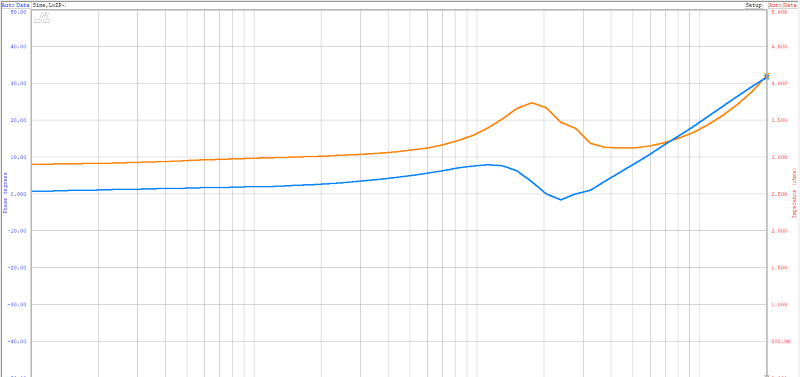
Sony XS-162GS Component Speaker Measurements
Let’s repeat the same analysis for the XS-162GS component set, shall we? Once again, I took a set of Thiele/Small measurements of the woofers straight out of the box and again after an eight-hour break-in and overnight cooling. The charts below show the before-and-after measurements and predicted changes in frequency response. As with the coaxial speakers, the change over time is minimal. The resonant frequency drops by a few hertz, the compliance barely changes at all, and the Qts drops by about 0.1. This isn’t going to be a night-and-day difference, so you are pretty much good to go, right out of the box.
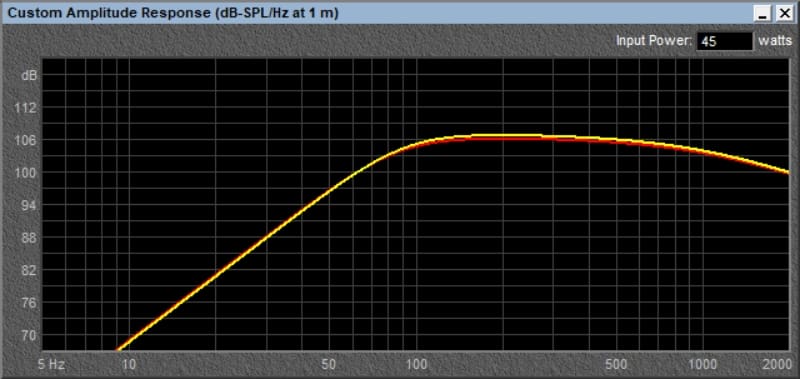
As with the coaxial driver, we can see the tall, narrow spike around the resonant 80-hertz resonant frequency. There is also a little resonance up at 1.2 kHz that might be the cone or the surround.
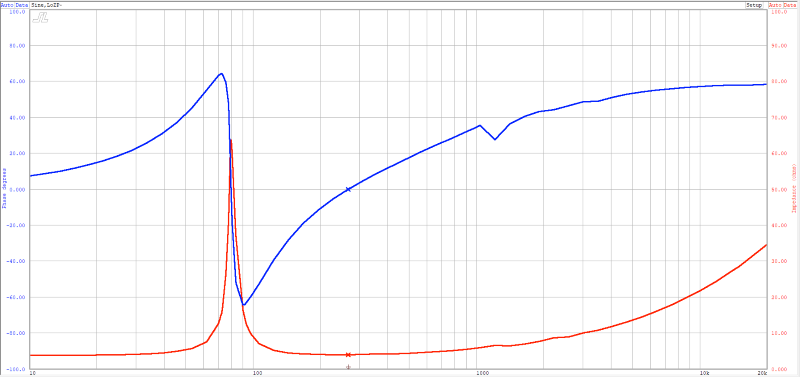
The subsequent measurement is an impedance sweep on the tweeter. I didn’t use the crossover while making this measurement. The slight bump in the orange impedance trace shows a resonant frequency of roughly 1.8 kHz for the tweeter, which is nice and low for a driver this size.
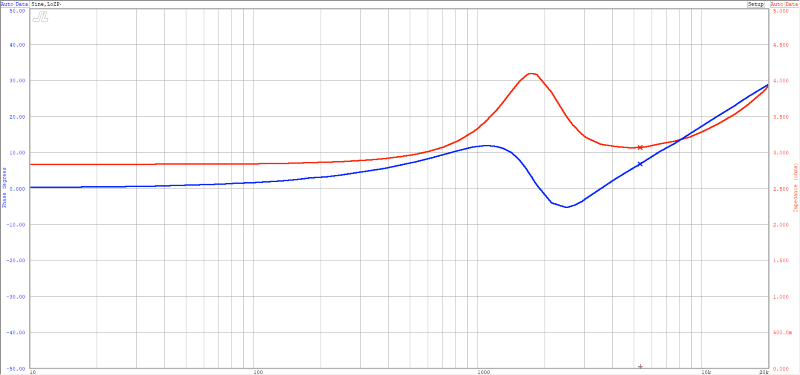
Sony 6.5-Inch GS-Series Coaxial Audition
With all the measurements done, I set the XS-162GS speakers up in my test enclosure for a listen. I’ll preface this by explaining speaker design criteria for different applications. When optimizing parameters for absolute precision in frequency response, speakers will have a relatively low Qts value in the 0.5 to 0.75 range. When you want to increase efficiency, the designer will increase this number into the 0.9 to 1.1 range. This increase in the Total Q factor adds a bump in the lower midrange and upper bass response. It adds warmth to the output and makes the speaker play louder with the same amplifier power. Likewise, increasing the overall system efficiency is easy by making the tweeters a little louder than would be deemed ruler-flat. These benefits can easily add a few decibels worth of output to make them ideal for low-power applications.
The first track I listened to was “Money for Nothing” by Dire Straits. I noticed a slight emphasis when Mark Knopfler sang the letter T. Likewise, the harmonics in the lead guitar were more prominent. The body of the percussion also stood out slightly. When they got into the body of the song, the guitar and drums had great impact and presence, even at moderate volume levels.
Impressive Efficiency Reduces Amplifier Power Needs
Next was the track “Brothers in Arms” from the same album. Here, I started by listening for any droning during the introductory guitar. Pleasantly, none was audible. Knopfler’s voice was ever so slightly chesty in terms of balance, but it made the vocals very clear.
I switched to Billie Eilish and listened to “You Should See Me in a Crown.” The midbass was presented with some emphasis, making these great speakers where the system might not have a subwoofer. Eilish’s voice had a little sizzle. The emphasis wasn’t to the point of being harsh or sibilant – just emphasized in the upper midrange. As with the Dire Straits track, the overall balance comes through as adding presence and clarity.

Sony GS-Series 6.5-inch Component Speaker Audition
After that quick listening session, I swapped the XS-162GS into my test cabinets with the tweeters about 2 inches above the woofers and on the same surface. The first track was “Bad Guy” by Billie Eilish. The balance made her voice sound clearer and less dark than my reference speakers. It made her much easier to understand. The midbass in the percussion is also very clear. The percussion and bass line in “You Should See Me in a Crown” was presented with a nice amount of emphasis because of the high-Q design of the woofers. They didn’t play deep bass notes loudly, but the harmonics were audible. You could use these with a small subwoofer to make an affordable system that would rock.
I finished by returning to “Money for Nothing” by Dire Straits. The attack of the floor toms’ body and rim shots was more forward in the mix. This balance gave the music an enhanced sense of impact. On “Brother’s in Arms,” there was a tiny bit of emphasis whenever Knopfler sang the letter A, but it wasn’t overbearing.
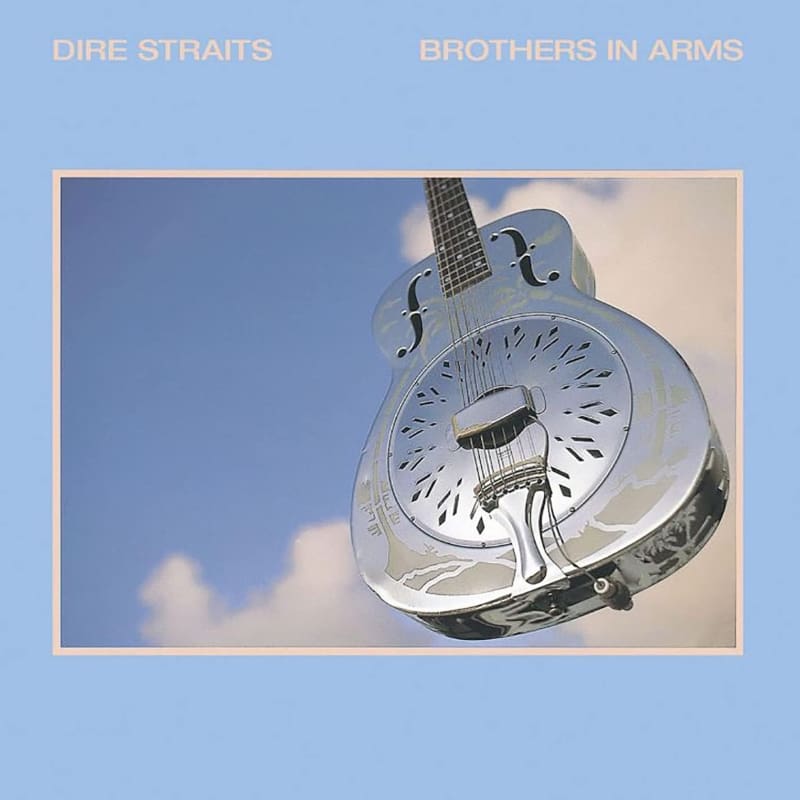
Conclusions on the Sony XS-162GS and XS-160GS Speakers
Designing a speaker that will work well at lower power levels while sounding good is no easy task. It’s very tricky to balance characteristics that add efficiency and presence without ruining the overall tonal balance of the system. The Sony team has obviously put a lot of work into designing the XS-160GS and XS-162GS speakers, making them a great upgrade for factory-installed speakers. They’ll also work great with regular and High-Power radios to reproduce fun and dynamic music.
While it might initially seem that I was somewhat critical of their tonal balance, the built-in emphasis can make music listening fun in modest systems. I would observe that their midbass and upper midrange efficiency are pretty complementary. They aren’t bright or harsh, which is a common criticism of many poorly engineered speakers. I would strongly suggest listening to these on a display board at a local authorized Sony car audio retailer. You’ll be impressed, especially given their affordable price points. Visit their website or Facebook page to learn more about Sony’s complete line of car audio products.

